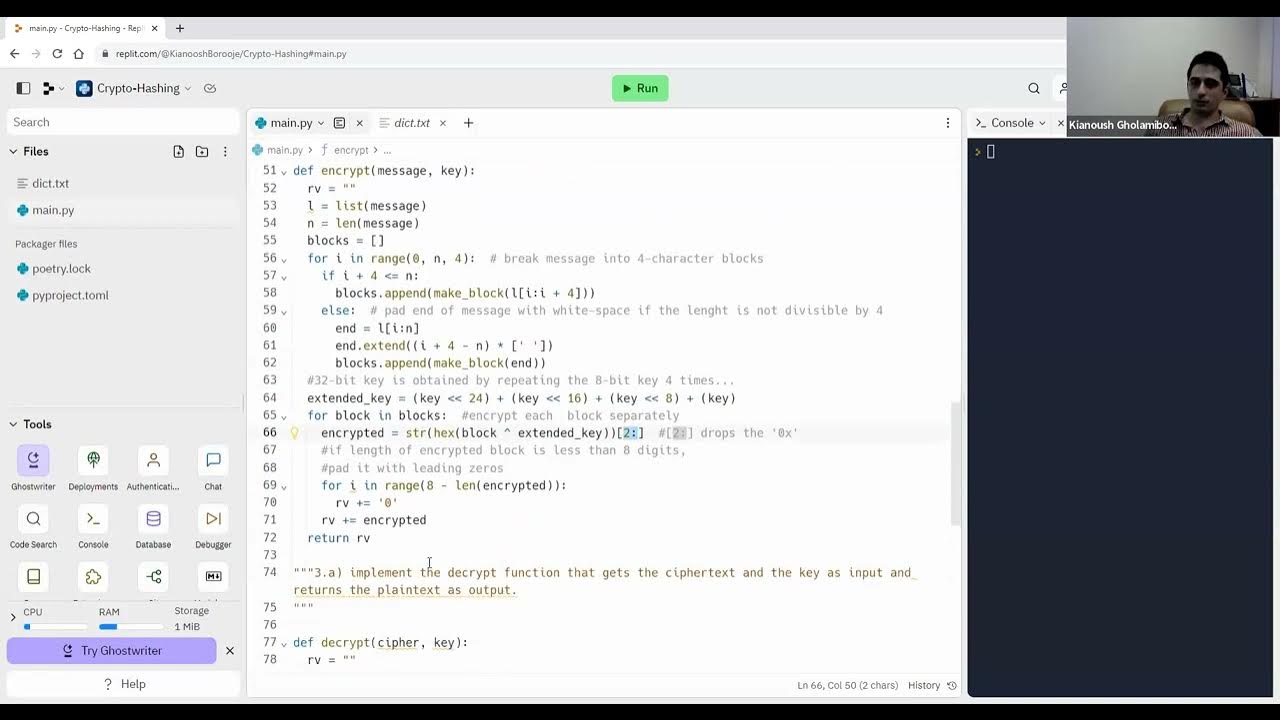Vigenere Cipher - Decryption (Unknown Key)
Summary
TLDRThis video tutorial explains how to decrypt the Visionaire cipher when the key is unknown, outlining two crucial steps: determining the key length and finding the key numbers. The presenter demonstrates how to analyze the cipher text for coincidences and use those patterns to deduce the key length. They further explain a mathematical principle that helps align letter frequencies to identify the actual key numbers. By systematically applying these techniques, viewers can ultimately decrypt their messages, emphasizing the importance of having enough cipher text for accuracy.
Takeaways
- 😀 Knowing the key length is essential for decrypting the Visionaire cipher when the key is unknown.
- 😀 The first step involves rewriting the cipher text in a shifted format to identify coincidences.
- 😀 A coincidence occurs when the same letter appears in the same position across multiple rows.
- 😀 Count the number of coincidences to determine the key length; larger numbers suggest potential key lengths.
- 😀 Frequency analysis is crucial; you need a long enough cipher text to obtain accurate results.
- 😀 To find the actual key numbers, compare letter frequencies in the cipher text with known frequencies.
- 😀 Aligning numbers correctly when multiplying helps maximize the result, crucial for decrypting the cipher.
- 😀 Shift the rows of letters to discover which shift produces the highest sum of multiplied frequencies.
- 😀 The process of determining the key numbers involves repeating the frequency and alignment steps for different starting positions.
- 😀 Once the key is identified, refer back to the decryption process to reveal the original message.
Q & A
What is the main focus of the video on decrypting the Visionaire cipher?
-The video focuses on how to decrypt the Visionaire cipher without knowing the key, detailing steps to find the key length and the actual numbers in the key.
What are the two main steps involved in decrypting the Visionaire cipher when the key is unknown?
-The two main steps are determining the key length and finding the actual key numbers.
How does one determine the key length in the Visionaire cipher?
-To determine the key length, you write the ciphertext multiple times, shifting each line one character over, and then look for coincidences where the same letters align in the same positions.
What does a 'coincidence' refer to in the context of this decryption method?
-A 'coincidence' refers to instances where the same letter appears in the same position across different rows of the shifted ciphertext.
How do you find the actual numbers in the key after determining its length?
-Once the key length is known, extract every nth letter from the ciphertext, calculate the frequency of these letters, and compare these frequencies with expected frequencies of letters in the language.
What mathematical principle is highlighted in the video to help identify the key numbers?
-The video highlights a mathematical principle that suggests pairing the largest numbers with the largest values to maximize the sum, which is applied to the frequency analysis of letters.
What kind of frequencies does the video mention for a simple alphabet example?
-For a simple example with three letters A, B, and C, the frequencies mentioned are 0.1 for A, 0.2 for B, and 0.7 for C.
What is the significance of identifying the maximum sum in frequency calculations?
-Identifying the maximum sum helps to determine the correct alignment of letter frequencies, which reveals the actual numbers in the key.
What steps follow after identifying the first key number?
-After identifying the first key number, the same process is repeated for the other positions in the key, extracting letters based on their position and recalculating frequencies.
How can one decrypt the original message once the key is found?
-Once the key numbers are identified, you can use them to decrypt the original message by following the previously established method for decryption when the key is known.
Outlines

This section is available to paid users only. Please upgrade to access this part.
Upgrade NowMindmap

This section is available to paid users only. Please upgrade to access this part.
Upgrade NowKeywords

This section is available to paid users only. Please upgrade to access this part.
Upgrade NowHighlights

This section is available to paid users only. Please upgrade to access this part.
Upgrade NowTranscripts

This section is available to paid users only. Please upgrade to access this part.
Upgrade Now5.0 / 5 (0 votes)





